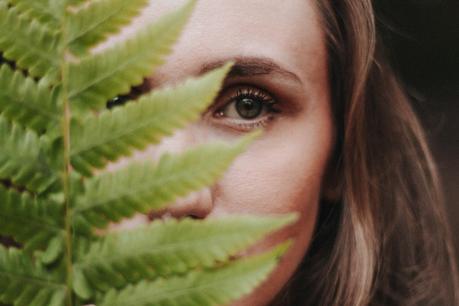
Anyone can develop skin cancer. But due to certain internal and external risk factors, some folks are more likely to get hit harder than others. The amount of sun exposure, genetics, previous treatments, lifestyle, and even race, skin color, and gender play a big role in increasing the risk for skin cancer.
Unfortunately, skin cancer isn’t something you can just easily cut out and you’ll be fine – it’s a tumor that starts in the skin cells that you have to catch before it spreads. Skin is the largest organ, so tumor spreads so fast, and it can go to places like your liver, lungs, and brain.
So here’s a simple checklist: If you happen to be one of these folks, you may want to have your skin checked for cancer.
1. If you’re always exposed to UV radiation
Ultraviolet radiation is a proven human carcinogen. This leading risk factor that causes skin cells to become cancer cells. You can get it from your everyday dose of sunlight, or rather, too much sunlight. If you’re a fan of tanning beds which emit UV radiation to produce a cosmetic tan, this can also be a wake-up call.
One bad sunburn before you turn 18 doubles your chance of developing skin cancer.
Beware if you’re someone who doesn’t wear sunscreen, live in locations with year-round bright sunlight, and spend a lot of time in the sun and in tanning salons.
2. If you have a fair skin tone
Caucasians have a higher risk of developing skin cancer. No, it’s not about the race. If you have less pigment (melanin) in your skin, which serves as your protective barrier from the UV radiation, the risk increases.
The risk is also greater in people with blonde or red hair, light-colored eyes, and whose skin freckles and burns easily. Making this revelation worse is the fact that most fair-skinned folks love basking in the sun and using tanning beds – which are primary risks for skin cancer.
In terms of demographics, it’s revealed that the highest rate of skin cancer in the world is Australia. That’s why they pay attention to skin cancer awareness campaigns, regular skin checks, and state of the art treatments.
3. If you’re a guy
Skin cancer hits men harder than women. Men are twice as likely as women to have basal cell carcinomas and about thrice as likely to develop squamous cell carcinomas. Extreme sun exposure is a leading culprit since most men do outdoor work. Additionally, men tend to be less likely to use sunscreen and garments to protect themselves from the sun.
4. If skin cancer is in your genes
If you have a family history and/or a personal history of skin cancer, there’s a significantly higher chance that you’ll have it again.
5. If you’re always exposed to arsenic
Arsenic is a heavy metal used for insecticides. Exposure to large amounts of arsenic, as well as industrial tar, coal, paraffin, and certain types of oil, increases the risk of skin cancer.
6. If you smoke a lot
Do you know that you can get cancer from smoking before it even hits the lungs? Smoking is one huge risk factor for squamous cell skin cancer, particularly on the lips. Add this as one of the reasons to quit.
7. If you’ve had radiation treatment in the past
Have you ever received radiation therapy for skin diseases like eczema and other conditions? If you’ve been treated with radiation exposure, there’s a chance you’ll develop skin cancers in the exposed area.
8. If you have a weakened or suppressed immune system
Skin cancers in individuals with weak immune systems likely grow faster and tend to be fatal. It’s because of the skin’s inability to repair UV damage. Conditions that damage the immune system include viruses and infections, diseases, or immune suppression therapies linked to organ transplantation.
9. If you’ve got a lot of moles
Moles are sexy – there’s no doubt in that. The chance for a single mole to turn into cancer is also very low. However, having a large number of moles (more than 50) may increase the risk of getting the rarest yet deadliest type of skin cancer: melanoma.
If you have many moles, and you think you also qualify for the other risks mentioned here, you should undergo thorough skin exams.
To see if your mole is cancerous, you should know your ABCDEs:
• Asymmetry. Malignant moles are asymmetrical
• Border. Malignant moles have uneven borders, with scalloped or notched edges.
• Color. Having a mole with a variety of colors (different shades of black, tan, black, and even red) is a warning signal.
• Diameter. Melanomas are larger in diameter, usually bigger than your pencil tip eraser.
• Evolving. Benign moles look the same over time. Malignant ones evolve or change in terms of size, shape, color, or elevation. Bleeding, itching and crusting are also dangerous symptoms.
10. If you’re getting older
On an average, skin cancer risks go up as you age due to accumulated exposure to UV radiation. However, there are many cases of young people being diagnosed with skin cancer. It’s due to frequent and extreme sun exposure without protection, the popularity of indoor tanning, and other internal factors.
Check yourself. Educate yourself. Send this information to anyone, especially to people below eighteen. Spread the word and save a life.
Author Bio: Carmina Natividad is a resident writer for Géniale, a Medical Aesthetic and Skin Cancer Centre providing top of the line services from industry-leading skin cancer treatments to innovative medical aesthetic procedures. She writes articles focusing on cosmetic, medical, and surgical care, and wellness.
